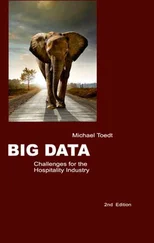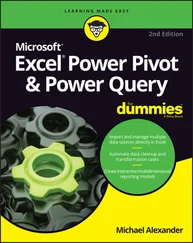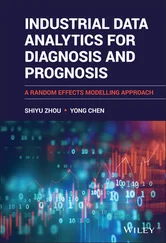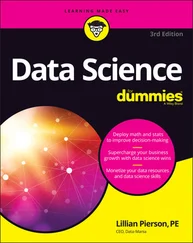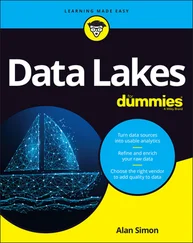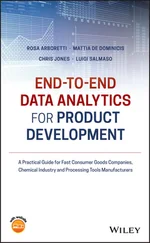Performance isn’t the only limiting factor when assessing blockchain for the enterprise. Integration with legacy artifacts and the ease with which the blockchain infrastructure fits into the existing enterprise IT infrastructure are concerns as well. Do all blockchain nodes require new virtual or physical hardware? Can the new nodes run on existing servers? What about network connectivity? Will existing network infrastructure support the new blockchain network? These are only a few of the many questions that enterprises must answer before deploying a blockchain integration project.
Understanding Primary Blockchain Types
In 2008, Bitcoin was the only blockchain implementation. At that time, Bitcoin and blockchain were synonymous. Now hundreds of different blockchain implementations exist. Each new blockchain implementation emerges to address a particular need and each one is unique. However, blockchains tend to share many features with other blockchains. Before examining blockchain applications and data, it helps to look at their similarities.
Categorizing blockchain implementations
One of the most common ways to evaluate blockchains is to consider the underlying data visibility, that is, who can see and access the blockchain data. And just as important, who can participate in the decision (consensus) to add new blocks to the blockchain? The three primary blockchain models are public, private, and hybrid.
Opening blockchain to everyone
Nakamoto’s original blockchain proposal described a public blockchain. After all, blockchain technology is all about providing trusted transactions among untrusted participants. Sharing a ledger of transactions among nodes in a public network provides a classic untrusted network. If anyone can join the network, you have no criteria on which to base your trust. It’s almost like throwing a $20 bill out your window and trusting that only the person you intend to pick it up will do so.
Public blockchain implementations, including Bitcoin and Ethereum, depend on a consensus algorithm that makes it hard to mine blocks but easy to validate them. PoW is the most common consensus algorithm in use today for public blockchains, but that may change. Ethereum is in the process of transitioning to the Proof of Stake (PoS) consensus algorithm, which requires less computation and depends on how much blockchain currency a node holds. The idea is that a node with more blockchain currency would be affected negatively if it participates in unethical behavior. The higher the stake you have in something, the greater the chance that you’ll care about its integrity.
Because public blockchains are open to anyone (anyone can become a node on the network), no permission is needed to join. For this reason, a public blockchain is also called a permissionless blockchain. Public (permissionless) blockchains are most often used for new apps that interact with the public in general. A public blockchain is like a retail store, in that anyone can walk into the store and shop.
Limiting blockchain access
The opposite of a public blockchain is a private blockchain, such as Hyperledger Fabric. In a private blockchain, also called a permissioned blockchain, the entity that owns and controls the blockchain grants and revokes access to the blockchain data. Because most enterprises manage sensitive or private data, private blockchains are commonly used because they can limit access to that data.
The blockchain data is still transparent and readily available but is subject to the owning entity’s access requirements. Some have argued that private blockchains violate data transparency, the original intent of blockchain technology. Although private blockchains can limit data access (and go against the philosophy of the original blockchain in Bitcoin), limited transparency also allows enterprises to consider blockchain technology for new apps in a private environment. Without the private blockchain option, the technology likely would never be considered for most enterprise applications.
Combining the best of both worlds
A classic blockchain use case is a supply chain app, which manages a product from its production all the way through its consumption. The beginning of the supply chain is when a product is manufactured, harvested, caught, or otherwise provisioned to send to an eventual customer. The supply chain app then tracks and manages each transfer of ownership as the product makes its way to the physical location where the consumer purchases it.
Supply chain apps manage product movement, process payment at each stage in the movement life cycle, and create an audit trail that can be used to investigate the actions of each owner along the supply chain. Blockchain technology is well suited to support the transfer of ownership and maintain an indelible record of each step in the process.
Many supply chains are complex and consist of multiple organizations. In such cases, data suffers as it is exported from one participant, transmitted to the next participant, and then imported into their data system. A single blockchain would simplify the export/transport/import cycle and auditing. An additional benefit of blockchain technology in supply chain apps is the ease with which a product’s provenance (a trace of owners back to its origin) is readily available.
Many of today’s supply chains are made up of several enterprises that enter into agreements to work together for mutual benefit. Although the participants in a supply chain are business partners, they do not fully trust one another. A blockchain can provide the level of transactional and data trust that the enterprises need. The best solution is a semi-private blockchain — that is, the blockchain is public for supply chain participants but not to anyone else. This type of blockchain (one that is owned by a group of entities) is called a hybrid, or consortium, blockchain. The participants jointly own the blockchain and agree on policies to govern access.
Describing basic blockchain type features
Each type of blockchain has specific strengths and weaknesses. Which one to use depends on the goals and target environment. You have to know why you need blockchain and what you expect to get from it before you can make an informed decision as to what type of blockchain would be best. The best solution for one organization may not be the best solution for another. Table 2-1shows how blockchain types compare and why you might choose one over the other.
The primary differences between each type of blockchain are the consensus algorithm used and whether participants are known or anonymous. These two concepts are related. An unknown (and therefore completely untrusted) participant will require an environment with a more rigorous consensus algorithm. On the other hand, if you know the transaction participants, you can use a less rigorous consensus algorithm.
TABLE 2-1Differences in Blockchain Types
| Feature |
Public |
Private |
Hybrid |
| Permission |
Permissionless |
Permissioned (limited to organization members) |
Permissioned (limited to consortium members) |
| Consensus |
PoW, PoS, and so on |
Authorized participants |
Varies; can use any method |
| Performance |
Slow (due to consensus) |
Fast (relatively) |
Generally fast |
| Identity |
Virtually anonymous |
Validated identity |
Validated identity |
Contrasting popular enterprise blockchain implementations
Читать дальше

